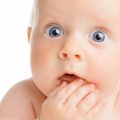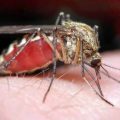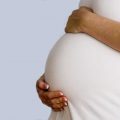- malaria vectors
- Causes of Malaria
- Types of malaria and course of the disease
- malaria symptoms
- Malaria in children
- diagnostic methods
- malaria treatment
- medication
- Terms of care for a sick patient
- What can I eat and how to eat during illness?
- Preventive actions
- preventive medications
- Consequences and complications
- Malaria on the lips
Malaria - infection, transmitted transmissible (by insect bites) by. In identifying the symptoms of malaria, the patient has a fever, febrility, increase in the size of the spleen and liver, pain in joints and muscles. Malaria is carried by mosquitoes of the Anopheles genus, are infected with protozoa of the genus Plasmodium, which then penetrate into the human body, through bites.
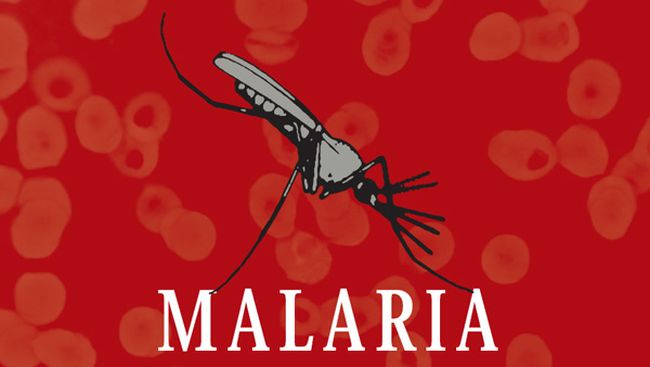
malaria vectors
Malaria is caused by a single-celled parasite - plasmodium. Them there is a large number of species - more 200, but on the person can parasitize about 10 of them.
The disease is dangerous, that malaria only a small degree can be controlled by man. Malaria is transmitted as follows:. After contact with the pathogen in the human body, It begins producing substance, which attracts mosquitoes. It is they - the carriers of malaria. In the mosquito Plasmodium fall during bloodsucking and in the same manner, they are transferred into the body of another person.
Causes of Malaria
Malaria develops owing to penetration into the body of a 4 species plazmodyev. Human Infection occurs by penetration of Plasmodium infected with the saliva of the female mosquito. Man is the intermediate host of parasites. The last stage of their development takes place in the body after the female mosquitoes bite an infected person.
In this way, the main route of transmission of malaria - transmissive. Also it is possible to become infected by gemotransfuziynym, ie. through blood. There is a possibility of transplacental transmission during pregnancy.
Types of malaria and course of the disease
By methods infection isolated 2 type of malaria:
- sporozoitnuyu;
- shizontnuyu.
Sporozitnaya form It means infection the natural way - through Mosquito bite, When the saliva into the body fall sporozoites. When shizontnoy form are administered into the body already formed schizonts (through a syringe).
foreign protein, getting into the blood, It leads to a number of changes. It affects the spleen cells, liver, The result is their hyperplasia, and during prolonged course of the disease begins proliferation of connective tissue. Blood with increased intensity fills bodies, which is why there is their pain and increase in size.
Also, foreign protein affects the human immune system. Under its influence, the sensitivity of the organism, and start an autoimmune reaction.
Particular attention should be paid to the development of malignant forms of the disease. They are based on a system malfunction microvessels in conjunction with thrombus syndrome. Often manifested as tropical malaria. Also in this form of developing disturbances in the brain, tk. pathogen reproduction occurs in the capillaries of the internal organs, and most often it is in the brain accumulates the bulk of parasites. Changes lead to an increase in blood density, slowing blood flow, resulting in the parasite develops thrombosis. Frequent addition of malignant forms are toxic shock, allergic reactions.
Malaria can proceed with relapsed. This happens because of the preservation of the blood erythrocyte schizonts during 3 months after the cessation of symptoms. Schizonts may again begin to multiply at lower immunity.
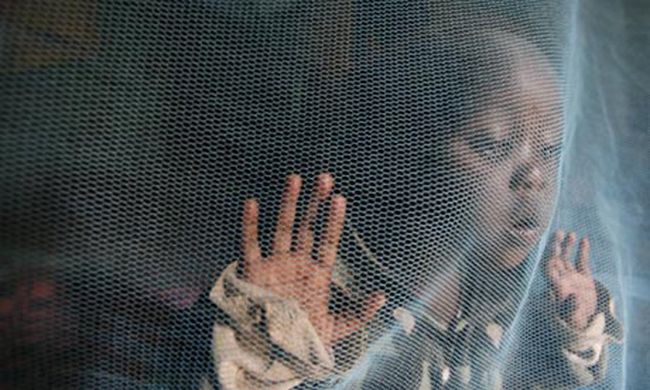
malaria symptoms
The incubation period of malaria is from the week before 1,5 months. Sometimes it can be increased by several times - from 6 to 12 months of incubation period upon infection is slowly developing forms of parasites.
Depending on the form of the pathogen period before the first symptoms of malaria will be:
- vivax - from 10 to 21 day;
- malaria oval - from 11 to 16 day;
- a four-day malaria - from 25 to 42 day;
- tropical forms - from 10 to 20 day.
Malaria proceeds with recurrent febrile states, alternating with periods of calm. Malaria begins with the prodromal period, wherein manifest themselves precursors of developing disease.
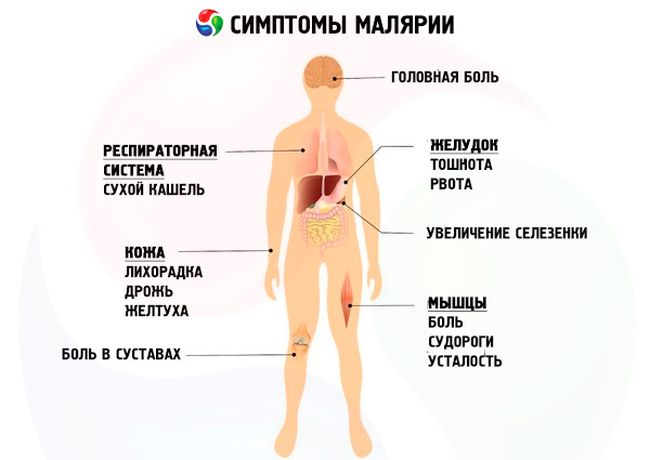
Prodrome malaria manifests:
- general weakness;
- constant fatigue;
- headaches;
- soreness in the joints;
- chill.
Step primary symptoms accompanied by fever of malaria attack, the duration of which can vary from 5 to 12 hours. Sometimes, its duration can be up to days.
secrete 3 stage attack, malaria:
- Chills. This phase is characterized by a slight increase in temperature - up 39 degrees, headache, nausea and vomiting, blueness of nasolabial triangle, fingertips. Pale skin, become cool. Then the temperature is rapidly growing, and comes 2 phase.
- Heat. step duration can range from several hours to several days. The temperature jumps to 41 degrees. Against this background, can develop delirium, hallucinations. Disrupted heart and respiratory organs, observed facial flushing, the skin becomes dry and hot.
- Hyperhidrosis. Sweating results in a significant drop in temperature - to 35 degrees. Usually, the patient falls asleep. Normal body temperature can be kept to a few days, then attack again repeated.
If you do not start treatment for malaria, the disease progresses very quickly. After the lapse of 3-4 seizures fixed increase in the size of the liver and spleen, growing signs of anemia, weakness. Skin becoming a pale yellow color.
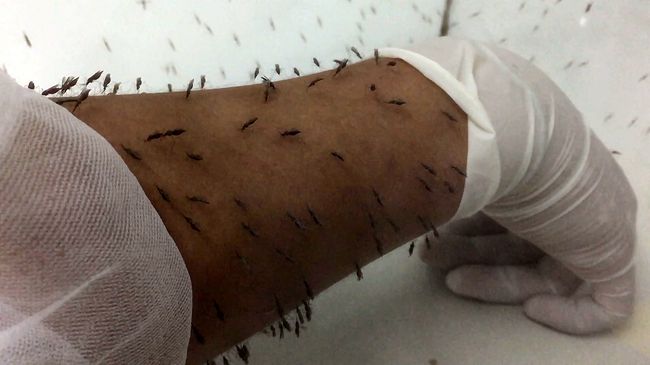
Specificity attacks depending on the species. Consider the main types of malaria.
At the three-day form of short-lived attacks occur, which does not exceed the duration of 8 hours. They start in the morning. Attacks and periods of calm alternate day by day.
Malaria oval accompanied by less severe symptoms. Unlike the three-day form is, that the attack begins in the evening.
tropical malaria. Step heat is very long and can last about 40 hours. During this time, the patient loses all power. In the absence of medical care death can occur. calm periods are very short - no more than 3-4 hours. May develop malarial coma. This cerebral pathology, which is characterized by a very fast-flowing and has a very poor prognosis with a high probability of death.
There is a risk of ingestion of several species of parasites. This situation leads to the atypical course of the disease, difficult diagnosis and treatment.
the, how merciless mosquitoes, carrying malaria, you can see in the photo.
Malaria in children
In the regions, where malaria is prevalent, very high infant mortality rate from this disease. The hardest thing for the probability of death in children from six months to 4-5 years old. malaria clinic at the child has its own specifics. It can be absent of such characteristic feature of the disease, as the malarial paroxysm. Rapidly developing anemia, there are such symptoms, as seizures, bowel disorder, vomiting, stomach ache. On the skin appear hemorrhage. Malaria in older children takes place in the same, as in adults.
Another dangerous malaria for pregnant women. It can cause miscarriage, miscarriage, the occurrence of eclampsia in women (a very high pressure level, life-threatening maternal and fetal), death.
diagnostic methods
Before treatment against malaria is necessary to accurately establish the diagnosis.
Malaria Diagnosis includes:
- general blood analysis;
- general urine analysis;
- biochemical analysis of urine.
Blood necessarily pass on malaria. For the KLA during infection is characterized by:
- reduction of hemoglobin;
- reduction in red blood cell levels;
- color index is normal or below normal;
- reduced mean corpuscular volume;
- increased level of platelets and leukocytes.
In the analysis of urine indicate malaria:
- Detection of hemoglobin in urine;
- the presence of blood clots;
- eritrotsiturii.
Biochemical analysis shows:
- increased activity of AST and ALT;
- increase in bilirubin;
- albumin level rise.
Diagnosis must take into account a number of criteria:
- clinical criteria, which implies the presence of typical symptoms of malaria;
- epidemic - during the last 3 years there has been a presence in the country, where malaria is prevalent;
- anamnesis - involve the study of history, which may include information about previously transferred malaria, or transfusion facts;
- laboratory (research results) - are the backbone of diagnosis.
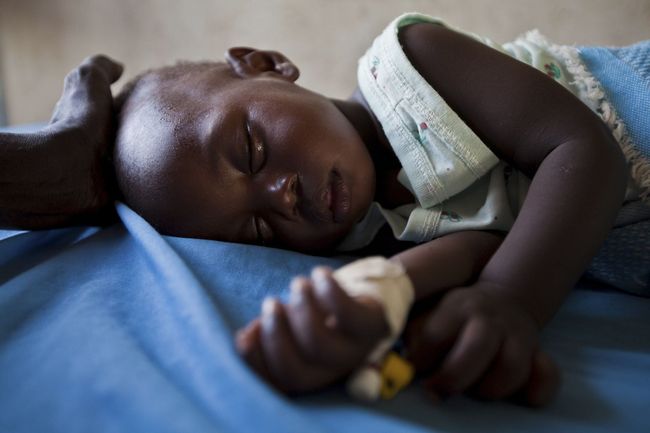
malaria treatment
How to get rid of malaria only knows the doctor. malaria treatment can be carried out solely under the supervision of a doctor - infectious diseases. It is mandatory to conduct a systematic analysis of blood to evaluate the effectiveness of treatment. The disease is treated only in a hospital environment.
Malaria control requires setting several goals:
- stop the pathogen ability to live;
- avoid the development of complications;
- prevent death;
- conduct preventive chronicity and recurrence;
- to prevent the further spread of the parasite;
- prophylaxis to prevent generation of parasite resistance to drugs.
medication
Drugs against malaria are selected depending on the type of disease, development or absence of complications, stage of the parasite life cycle, drug resistance.
For the treatment of the following groups of medicines can be used:
- Hinolilmetanolы;
- biguanides;
- Diaminopirimidinы;
- Terpenlaktony;
- hydroxynaphthoquinone;
- sulfonamides;
- Sulifony;
- Tetratsiklinы;
- lincosamides.
Hinolilmetanolы characterized gematoshizotropnym action. These tablets protect erythrocytes by Plasmodium. Some of them also have the effect gematotsidnym, ie. prevent further penetration of the plasmodium in the body of the carrier.
biguanides characterized gistoshizotropnym action and gematoshizotropnym.
Similar effects are characterized preparations of diaminopyrimidine.
TO terpenlaktonam It refers Artemisinin, which is used, when there is resistance to the parasites used drugs. Also refers to preparations reserve atovaquone (hydroxynaphthoquinone group), which the, as the previous funds, characterized gematoshizotropnym effect.
Sulfonamides and sulfones prmenyaetsya in combination with pyrimethamine.
Characterized by low activity tetratsiklinы and linkosamidы.
In the treatment of malaria and other means are used. for example, antihistamine tablets, diuretics, colloidal solutions, cardiotonic and glyukokortikoidы. In renal insufficiency appoint furosemide, by vomiting - Reglan. Detoxifying hemodialysis procedure is carried out in complex cases.
Terms of care for a sick patient
To cure malaria, It requires not only a properly fitted drugs, but constant and quality care. During the chill you may need an extra blanket, as well as heating pads for feet. During the heat of the patient reveal, but you can not prevent hypothermia. After step sweating patient need to disguise.
It should ensure penetration preventing mosquitoes in a room, where a person is infected. It is important to prevent further spread of the disease.
What can I eat and how to eat during illness?
Meals should be frequent, portions - small. We recommend the following products:
- lean meats and fish, broths;
- boiled eggs;
- milk products;
- cereal - semolina, rice, buckwheat (you need to grind);
- boiled vegetables;
- crackers;
- mashed fruits and berries;
- juices, herbal teas.
Such food for malaria, It provides sufficient activation of the body's defenses, not bothering him. Also, a patient in need of plentiful drink.

Preventive actions
Preventive measures must always be used when traveling or permanent residence in the country, where malaria is prevalent. These countries are not recommended for pregnant women to attend, people with HIV, children up to 4 years.
To protect yourself from mosquito bites, You can use the following methods:
- mosquito nets;
- repellents - means, mosquito repellent;
- insekticidы - funds, designed to kill insects.
preventive medications
It is necessary to clarify, what 100% protection from infection by the use of drugs will not give, but it significantly reduces the likelihood of. When you select a product you need to know the regional disease resistance to medicines. Medications are beginning to take a week before the planned trip and continue receiving more for 4-6 weeks after returning.
The following formulations can be used:
- Chloroquine;
- Gidroksihorohin;
- Mefloxin;
- primaquine;
- proguanil;
- Primetamin.
Before the trip is usually recommended to be vaccinated. Immunizations can be obtained from hepatitis, typhus, yellow fever. However, an effective vaccine against malaria is currently not designed. The difficulty in its development is related to the genetic diversity of parasites - one vaccine can not protect against the effects of bites of different vector species. Universal remedy against malaria, Unfortunately, not.
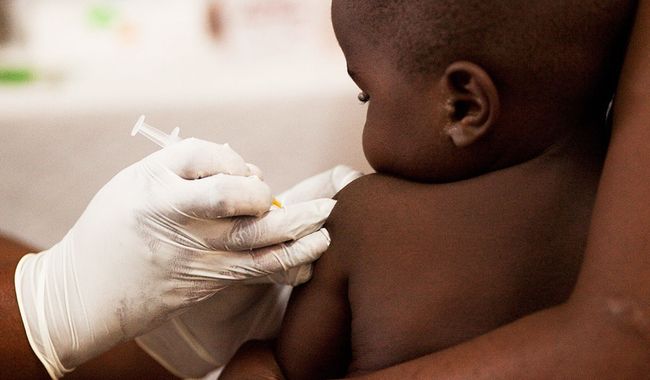
Consequences and complications
The answer to the question, why it is so difficult to cure malaria, due to the fact, it is growing rapidly and cause severe complications.
These include:
- coma;
- toxic shock;
- kidney failure;
- massive hemolysis;
- hemorrhage.
Malarial coma may occur due to any of the forms of malaria, but it is most common in tropical form. At the initial stage arise dizziness, repeated vomiting, pain in the head. Characterized by lethargy and drowsiness. Drowsiness is growing rapidly, and within a few hours of developing the condition sopor. You may experience cramps, there is muscle rigidity, light fear, confusion. In the absence of assistance to developing coma - the pressure drops, reflexes disappear, disrupted respiratory system. Patients with malaria disappear response to stimuli, changing vascular tone, temperature regulation. This is - a critical state, where urgent resuscitative measures should be applied.
Toxic shock syndrome also creates the possibility of death. Toxins violate the liver, kidney, light. The first feature is the reduction of blood pressure. This is due to vasodilatation, as well as the development of cardiac disorders. A high probability of death from renal failure, caused by insufficient blood supply to the body. Since the elimination of toxins from the body - the problem is kidney, then at this stage begins autointoxication. Toxic shock is accompanied by disorders of the nervous system: confusion, psychomotor agitation, increase in body temperature.
Acute renal failure is due to the destruction of red blood cells, accompanied by the release of hemoglobin. This may indicate blood in the urine. In addition, significantly reduced blood pressure. Significantly reduced the amount of urine. When oliguria this figure may be up 400 ml, with anuria - up 50-100 ml.
Acute massive hemolysis - the premature destruction of red blood cells. It causes anemia. May occur when inadequate therapy - if coupled with plasmodium destroyed red blood cells. Consequently possible quinine, or primaquine. It begins with chills and sharp temperature rise to 40 degrees. Accompanied by a very strong pain in muscles and joints, headache. There is repeated vomiting of bile with severe abdominal pain.
Hemorrhagic syndrome occurs, since because of the hemostatic disorders increased bleeding tendency. There are multiple hemorrhages in the skin and mucosa. Bleeding can occur in the brain and other organs. The high risk of formation of thrombi numerous. For malarial coma specific granulomas Durk - blood clots in the brain. They can cause swelling and bleeding.
Malaria on the lips
Externally malaria on the lips seen in small closely spaced bubbles, filled with liquid. The reason for their appearance - herpes simplex virus, so the disease is in its essence is not malaria.
The disease is in its flow involves passing several stages. First, there is tingling. Then, at this point it begins the formation of bubbles, that turn into ulcers. Gradually sores dry up and form scabs. At the last stage, the healing.
- Step tingling is accompanied by the appearance of low-energy pruritus. This feeling appears on the inside and the outside of the lip. FIELD itch can spread to the area around the nose and other parts of the face. The duration of this step is about one day. In malaria on the lips of the symptoms can be triggered by overheating or hypothermia, indicate the beginning of a cold. Sometimes the rashes appear in women before menstruation.
- At the stage of the formation of bubbles becomes inflamed. Affected skin swells, and on it there are small bubbles, located adjacent to each other. Initially, they are filled with a transparent liquid, which later becomes cloudy. Gradually increase the pressure inside rashes, which can lead to pain.
- The next stage begins in a few days. bubbles burst, and the liquid contained therein out. At this point formed jazvochka. An infected person is contagious especially in this period, since leaving the liquid contains a high concentration of virus.
- In the next step in the formation of crusts jazvochka. Do not attempt to remove them, as this will result in bleeding wounds, burning sensation, It increases the likelihood of penetration of bacterial infection.
On the restoration of the skin takes about 4-5 days.
The video clearly shows the life cycle of the plasmodium:
Treatment of malaria on the lips is carried out by means of special ointments. The most famous of them are Zovirax, acyclovir. As a folk remedy recommended fir oil, propolis tincture. These funds will help speed up the healing process.




